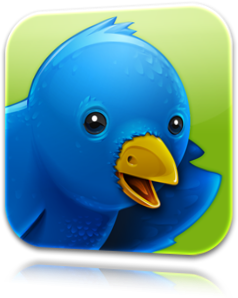It's Only Apple, But We Like It
/
In one week Apple will hold its annual September music-themed event. This year the slogan on the announcement reads, “It’s only rock and roll, but we like it.” Others say this is a Rolling Stones reference. I have no clue. I didn’t listen to the Stones. What I do know is that the announcement image this time around gives little-to-no allusion as to what may be announced at the event. No “hidden theme” so to speak. It’s just a shadow dancer with an iPod.
And what’s up with that? We haven’t seen Apple bring out the shadow dancers in at least a year or so. I do notice that the iPod the shadow dancer is holding has the cable coming from the bottom of the device. Perhaps he/she/it is holding an iPod touch? That would make sense. The iPod touch is practically the flagship iPod these days.
This brings me to chipping in my two cents on hopes and predictions of what may transpire next week.
iTunes
Let’s start with iTunes. The rumor mill has been saying we’ll see iTunes 9 with social networking integration. I suppose this means you’ll be able to tweet or post to Facebook whatever song you are listening to. Gag. I could care less. It just sounds like more feature bloat to me.
What I would rather see is for iTunes to get the Snow Leopard treatment. Few new features, major refinement. iTunes is still a Carbon app. (Carbon is the transitionary language used for porting Classic Mac OS 8/9 apps to OS X). With Snow Leopard, Apple ditched Carbon and moved everything over to native Cocoa. I mean, they even rewrote the entire Finder from the ground up. And it did wonders for the Finder’s performance.
iTunes has been begging for a revamp for a couple of years now, in my opinion. I’d like to see Apple rewrite iTunes from the ground up, throwing out years of crufty code that has built up and bogged down performance.
I’d rather see this than have social networking in iTunes. I have a feeling I’ll be disappointed.
iPhone OS 3.1
iPhone OS 3.1, which has been in beta with developers for a couple of months, will be available for the iPhone and iPod touch. I just hope it does for iPhone 3.0 what iPhone 2.1 did for 2.0. And that is to be what Apple should have shipped a couple months ago.
iPod updates
It’s basically a given that the iPods will get refreshed. My thoughts are short and sweet here.
The iPod touch will remain at current price points, but move to 16GB, 32GB, and 64GB. They will also see the inclusion of a camera. Many spy shots have surfaced over the past month showing this. If the photos are to be believed (and many do) it looks as if there is a pinhole next to the camera. My bet is that is for a small mic for video capture. Because video is kind of stupid without audio. The location of the mic makes sense for trying to limit the use of it to video capture. It would be odd to use a mic there for VOIP calls. And let’s face it, if you want to make a phone call on an Apple device, Apple would rather have you by an iPhone.
Internally, I think the iPod touch will gain a faster CPU, GPU, and more memory like the iPhone 3GS did earlier this summer. Externally, I think it will stay the same with the addition of the camera.
The iPod nano…I’m not sure. Traditionally, Apple has modified the overall design every year. However, rumors say the nano will retain the same design and gain a camera. This seems odd to me. Mainly because the iPod nano does not have Internet connectivity. See, the iPod touch has wi-fi, and can upload pictures to Flickr or MobileMe or wherever. The iPhone 3GS can upload video to YouTube and other services. Apple’s touchscreen devices have browsers and email clients. Cameras make sense.
Unless the iPod nano is getting drastically redesigned with a touchscreen (which would be cool, but I doubt it) I can’t see it gaining a camera. I really have no idea what Apple may do with the nano.
The iPod shuffle was just updated around 6 months ago. Perhaps more color choices than black or silver. Perhaps nothing.
That leaves the iPod classic. I think this is going away. Yes, it is iconic. Yes, it is the only iPod that holds more than 32GB of data. But if the iPod touch moves to 64GB, I think that seriously narrows the market. There is more incentive for a consumer to sacrifice some storage for the benefits of the iPod touch OS. Besides, how many people really fill up 120GB on an iPod?
Also, many of the manufacturers of the 1.8” hard drives that the classic utilizes are scaling down production drastically. Perhaps that is because Apple isn’t ordering too many of them these days.
The Mythical iTablet
Nothing to see here, people. Move along. Seriously, I’m not expecting the tablet this year. Developers will need time to makes apps for it. If Apple is planning to release it in 2009, it will get its own special event, likely in October. Why October? Because Apple has done events for the holiday season in October.
Steve Jobs
I think he’ll be at the event, he’ll do a little talking, but let other executives like Joz and Schiller do the heavy lifting, just like the November 2008 event when the unibody MacBook Pro debuted.
What do you think will happen next week?










